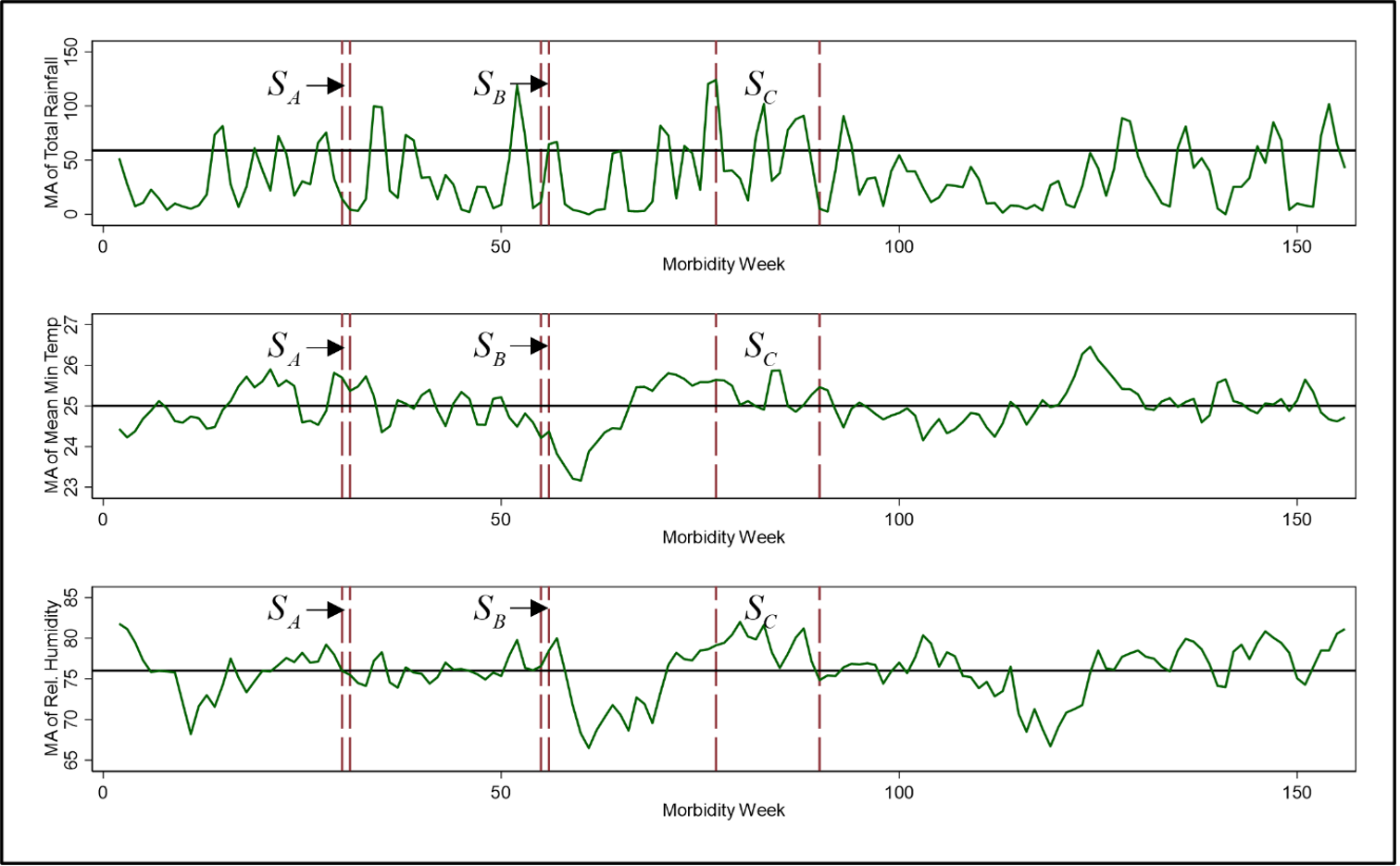VOLUME 16 NUMBER 2 (July to December 2023)

SciEnggJ. 2023 16 (2) 346-358
available online: October 20, 2023
*Corresponding author
Email Address: hgpantolla@up.edu.ph
Date received: May 9, 2023
Date revised: June 30, 2023
Date accepted: September 4, 2023
DOI: https://doi.org/10.54645/2023162LFX-34
ARTICLE
Proposed Econometric Strategy in Determining Thresholds of Levels of Diseases with Applications to Dengue Cases of a Highly Urbanized City
Cavite, Philippines
2Department of Physical Sciences and Mathematics,
University of the Philippines Manila, Manila, Philippines
Disease thresholds of outbreaks are typically set at two standard deviations above the endemicity and are arbitrary in nature. For dengue, the potential effects of the lags in the rise of the reported number of cases, the complexity of the impacts of specific meteorological parameters, possible effects of climate change, and natural environmental anomalies, among others, also vary per geographical area which could further complicate the identification of disease thresholds. Common practice is to calculate the two standard deviations beyond the endemic level. Existing research typically focuses on calculating a reproduction number pertaining to the average number of people infected by a person with the infection in a population that is otherwise negative of the disease. This study, on the other hand, aimed to propose a novel approach by applying econometric procedures to identify thresholds of Levels of Disease that could be useful in drafting epidemiological surveillance guidelines and plans of action. The proposed strategy was done using the moving average (MA) of the weekly totals of confirmed dengue cases in Davao City in the Philippines, from January 2018 to December 2020, as the dependent variable. The study setting was selected since it is classified as a Highly Urbanized City, and hence, urbanization and globalization, which are among the primary drivers of dengue emergence, are observed. As regressors, meteorological variables, such as total rainfall, mean maximum temperature, mean minimum temperature, and relative humidity, which have been substantiated by the literature as widely utilized variables with varying impacts on the transmission of dengue cases, were used in this study. The proposed five-stage strategy includes (1) Optimal Lag selection, (2) Autoregressive Distributed Lag (ARDL) Model applicability assumption evaluation, (3) extracting the MA of the number of weeks identified as the optimal lag, (4) applying the ARDL Model to determine supplemental significant regressors and lags, and (5) implementing the Threshold Regression (TR) Model to determine the thresholds to differentiate the Levels of Disease for the study setting. The findings show the optimal lag is 2 weeks. The variables used were statistically proven to be a combination of stationary at the level and the first difference and hence, the ARDL Model was deemed applicable. Further, the ARDL Model retained (1) the first and (2) second lags of the dependent variable, as well as (3) the direct effects of mean maximum temperature. These three significant variables were used as fixed independent variables whereas the rainfall, minimum temperature, and humidity were used as region-varying regressors, for the dependent variable in the TR Model. Three Levels of Disease were recommended after optimally determining two threshold values which are 71.00 and 88.50. Hence, the three levels for the two-week MA of dengue cases are Endemic Level (below 71.00), Hyperendemic Level (71.00 to 88.50), and Outbreak Level (above 88.50) are recommended. This reproducible spatiotemporal strategy that combines epidemiology and econometrics can be applied to other geographical areas and diseases and be further improved with a longer time series.
© 2025 SciEnggJ
Philippine-American Academy of Science and Engineering